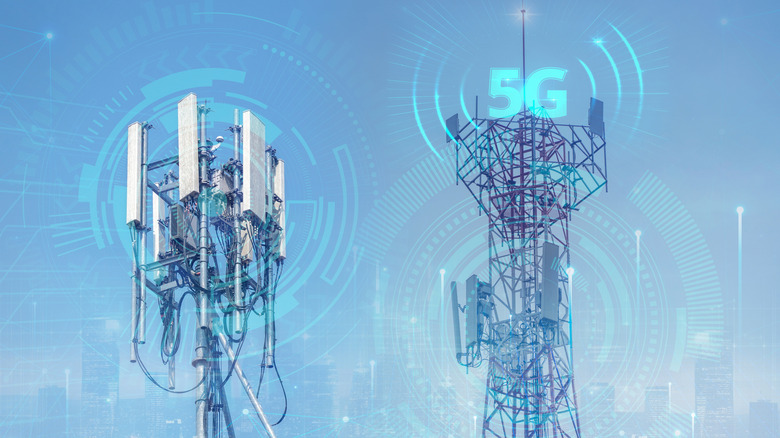5G Ultra Capacity Vs. Ultra Wideband: What's The Difference Between These Two Networks?
It has been over five years since 5G was introduced across the globe, and it's safe to say it has brought about major improvements both for personal and industrial use. With speeds that are theoretically a hundred times faster than 4G, you no longer have to wait forever to finish downloading that movie. The low latency of 5G also means less lag and a smoother experience when using livestreaming apps. In the IoT sector, especially in smart farms, 5G's massive increase in capacity allows users to add more devices into the network compared to 4G.
But even so, it's worth noting that not all 5G connections are created equal. Just because you see the 5G icon on your device doesn't mean you'll always get similar results every time. The 5G technology actually has multiple network types that feature different speeds and coverage. To know which one you're using, just look at the icon at the top of your device. If any of the 5G networks are available, you should see a 5G, 5G UW, or maybe even a 5G UC on your smartphone. 5G means you're on the lowest speed network, but what about 5G UC (Ultra Capacity) and 5G UW (Ultra-Wideband)? Is there any difference between the two?
Well, generally speaking, 5G Ultra Capacity and Ultra-Wideband are the same. They both use (or at least, are capable of using) 5G's higher speed network. The only difference between 5G Ultra Capacity and 5G Ultra-Wideband is the carrier and some nuances on the frequencies they use.
The technology behind 5G UC and UW, explained
To better understand the similarities between 5G Ultra Capacity versus 5G Ultra-Wideband, it's important to look at the technology behind 5G first, one of the promising innovations that changed how you use your phone. 5G signal is transmitted wirelessly through three different bands on the radio frequency spectrum: low-band, mid-band, and high-band. Low-band represents the lower end frequencies from 600 to 900 MHz. Mid-band is anywhere between 1 and 6 GHz, where the so-called C-band frequencies of 3.7 to 3.98 GHz reside. And finally, high-band uses the frequencies from 24 to 47 GHz, which includes the so-called millimeter waves (mmWaves) that start from 30 GHz.
Since they operate on different frequencies, these three bands offer different performances too. The low-band speed is only up to ten times faster than 4G, but it has the farthest reach and biggest coverage among the three. On the contrary, the high-band provides limited coverage but the fastest speeds. In the middle of the two is the mid-band, delivering speeds faster than the low-band but slower than the high-band, and coverage wider than the high-band but smaller than the low-band.
5G UC versus 5G UW
When talking about 5G Ultra Capacity and 5G Ultra-Wideband, they both refer to the same thing: a 5G connection that operates on either or both the mid-band and high-band. Compared to the standard 5G that only runs on the low-band, 5G UC and UW are faster while still providing decent coverage.
So if these networks are actually talking about the same thing, how are they even different? The main difference between 5G Ultra Capacity and Ultra-Wideband is the carriers and their frequencies. 5G UC is from T-Mobile, so you'll only see this and not 5G UW if you're a T-Mobile customer. T-Mobile's 5G Ultra Capacity uses either the mid-band, mmWave high-band, or both. On the other hand, 5G UW is exclusive to Verizon subscribers. Verizon's 5G Ultra-Wideband utilizes both the mid-band (specifically the C-band) and the mmWave high-band.
But if 5G UC is T-Mobile's and 5G UW is Verizon's, how about AT&T? Well, that's what the 5G+ on your phone means. 5G+ is AT&T's version of the UC and UW. It operates on either the mid-band or high-band.


